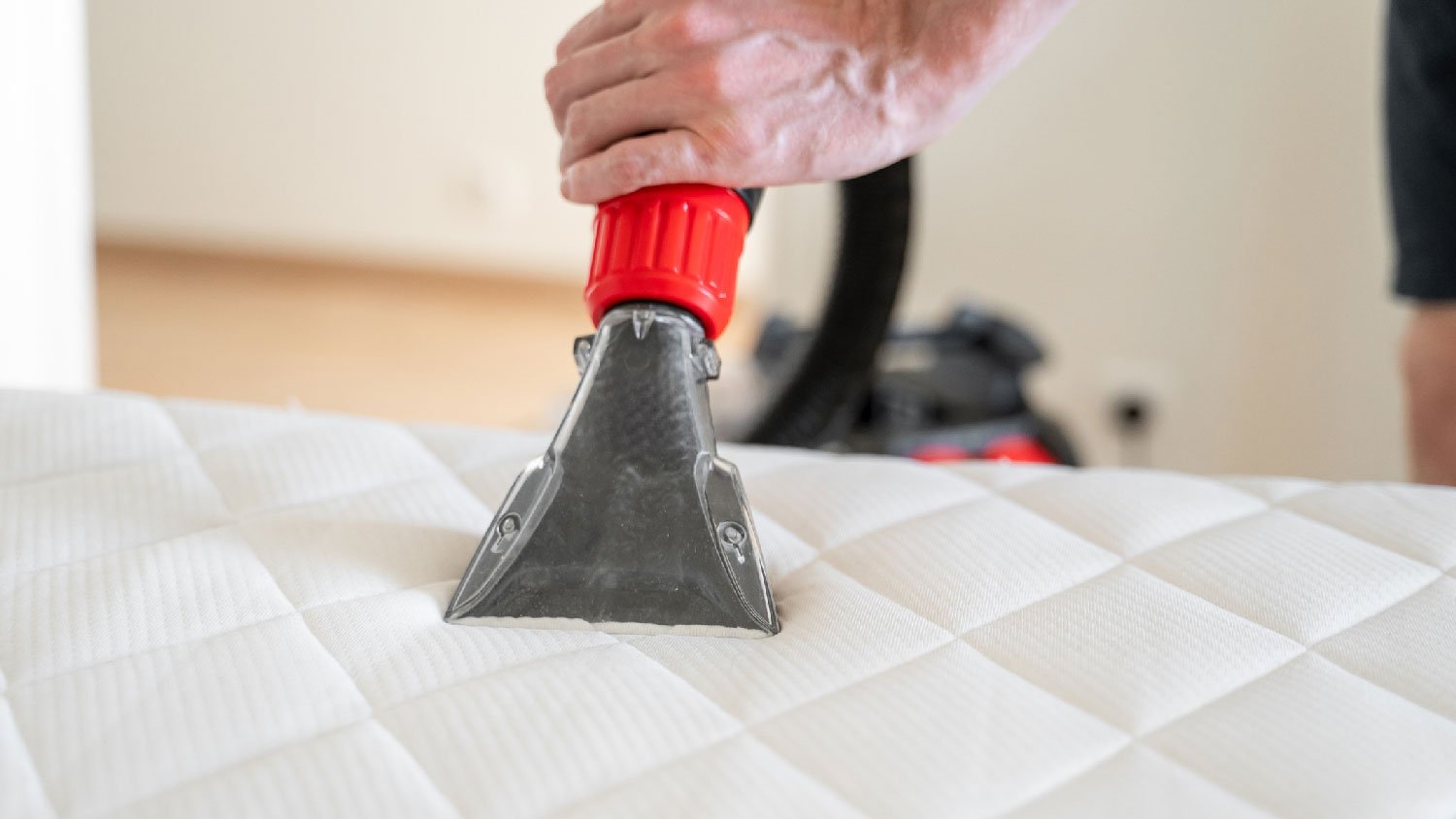
Garage clean-out costs vary considerably depending on the garage size, the waste type and amount, and how much work you do yourself.
We pull the rug out from this commonly debated hack


You must vacuum the mattress and pretreat stains before using a carpet cleaner.
You should only use upholstery-safe cleaning solutions to avoid oversaturating the mattress.
Work in small sections with the upholstery attachment and perform a dry pass to remove excess moisture.
Allow the mattress to dry completely for 24 to 48 hours before making the bed or using it again to prevent mold or mildew.
For light cleaning or odor removal, baking soda and a vacuum can be effective alternatives to using a carpet cleaner.
Cleaning a mattress is a lot like cleaning a carpet: Both require a deeper clean than a simple surface wash. That said, can you use a carpet cleaner on a mattress? The short answer is yes, but there are a few important caveats to know before you spray. Let’s get into the basic things to know about using a carpet cleaner on your mattress.
Before using a carpet cleaner on your mattress, review these essential guidelines:
Check the mattress care label to ensure it’s safe to clean with a carpet cleaner.
Avoid using standard carpet-only detergents, which may be too harsh for mattress fabrics.
Use the carpet cleaner’s upholstery attachment and work in small sections to prevent oversaturation.
Take extra care not to overly wet a memory foam mattress, as these can hold on to moisture and take a very long time to dry.
Only use cleaning solutions that are safe for upholstery or mattresses.
Allow the mattress to dry completely before making the bed or sleeping on it to avoid mold and mildew.
Speed up drying time with fans, open windows, or a dehumidifier.
Now that we know that you can use a carpet cleaner on a mattress, let’s review the basics of how to use a carpet cleaner to clean a mattress.
Just like cleaning a carpet, you should start by vacuuming the mattress thoroughly to remove dust and debris, and pretreat stains using a mattress-safe stain remover or enzymatic cleaner.
Next, set up your carpet cleaner according to the manufacturer’s instructions.
Use hot water and a cleaning solution that’s safe for upholstery or mattresses—never use standard carpet-only formulas.
Work in small sections using the upholstery attachment, applying a light spray of solution and immediately suctioning it back up.
Avoid oversaturating the mattress, especially if you’re cleaning memory foam.
After cleaning, go over the mattress with a dry pass to extract as much moisture as possible.
Once you’ve finished cleaning, let the mattress dry completely, ideally in a sunny, well-ventilated space or with the help of fans or a dehumidifier. Full drying may take 24 to 48 hours, and it’s crucial to avoid trapping moisture to prevent mold or mildew.

Renting a carpet cleaner costs around $100 per day. Comparatively, the average cost of having a mattress professionally cleaned is $65 to $150. With that in mind, if you’re only cleaning a single mattress, hiring a pro may offer you the most bang for your buck. However, if you’re cleaning multiple mattresses, or if you have other furniture and carpeting to clean, renting a carpet cleaner can be worth the investment.
Using a carpet cleaner isn’t the only effective method for cleaning a mattress. For basic cleans, you can use a regular dry vacuum with an upholstery attachment. Start by vacuuming the entire mattress, including the sides and seams. Then, sprinkle a light layer of baking soda over the surface to deodorize the mattress and let it sit for about 30 minutes.
Once the baking soda has absorbed any odors, vacuum it up thoroughly to refresh the surface of the mattress. Use hydrogen peroxide or enzyme cleaner to clean urine from a mattress, as well as other biological stains. For mild stains, you can use a simple solution of dish soap and water. Then, allow the mattress to dry completely for 24 to 48 hours.
From average costs to expert advice, get all the answers you need to get your job done.

Garage clean-out costs vary considerably depending on the garage size, the waste type and amount, and how much work you do yourself.

Discover the average acoustic ceiling cleaning cost, what affects pricing, and how to save. Get expert tips to budget for your acoustic ceiling cleaning project.

Hiring a house cleaner frees up your schedule and keeps your home spotless. The cost to hire a house cleaner depends on the size of your house, your schedule, and who you hire. Use this guide to understand typical house cleaning prices better.

Discover simple baseboard cleaning tips to remove dust, grime, and scuffs. Learn when to DIY and when to call in a pro for deeper home cleaning.

Steam mopping your floors is a quick and easy way to transform a dirty room. This helpful guide will teach you how to use a steam mop properly.

Protect your most precious furniture by learning how to clean antique wood the right way. Best of all? It's not as tricky as you may think.